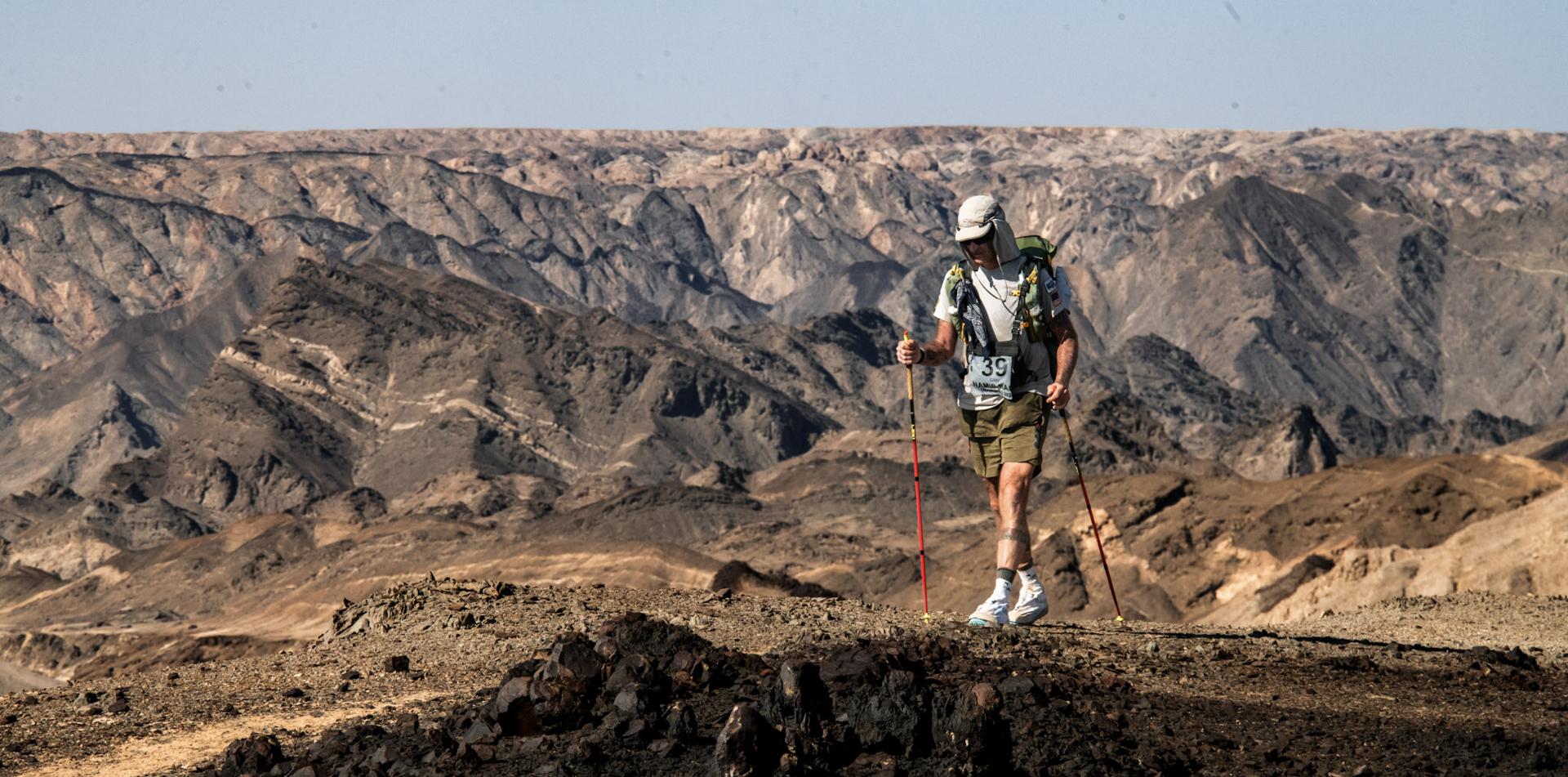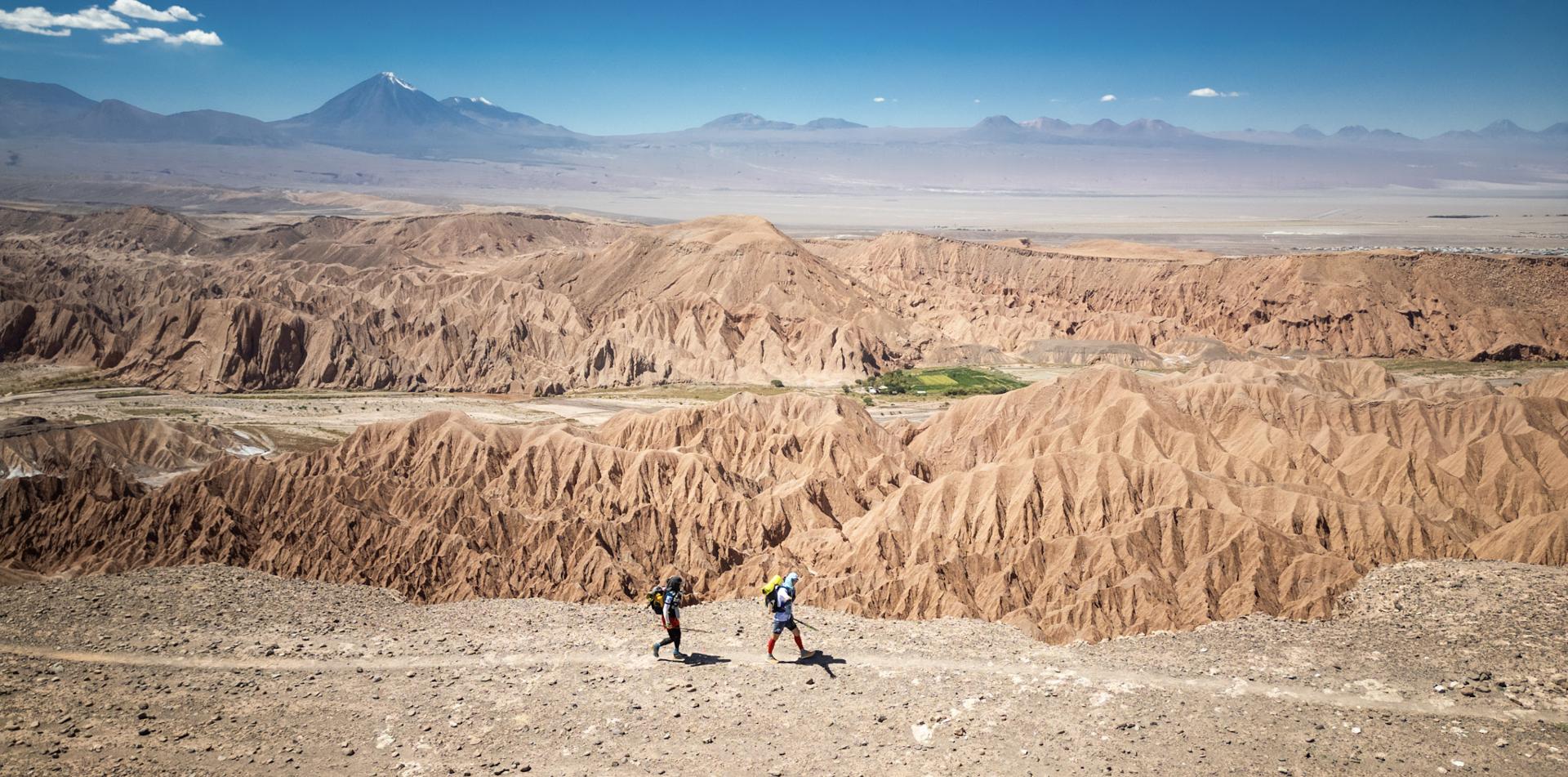Top Tips & Notes on Training from Atacama Crossing Racer & Trainer
In September 2023, I competed in the Atacama Crossing, a 250km 6-stage footrace through the Atacama Desert in Chile. It was my first stage race and I finished feeling strong, injury-free, and in 2nd place.

Most general training advice is easy to find everywhere, so I wanted to jot down a few less referenced points I have learned this year while training for the stage race and other ultras. It was also during this period that I was studying to become an ultrarunning coach. Below are some notes on how I went about training and racing. It doesn’t cover everything - it’s just a few points I want to remember and that I plan to share with the racers I coach.
It should be understood that the specifics of the notes only apply to me, for this race, at this point in my running journey. My future strategies will vary depending on the variables, but the key lessons I found applicable to any race are in bold below each block of commentary.
TRAINING WITH LIMITED TIME
Like a lot of racers, I went into the race feeling like I could have done more. More hills, more intervals, more strength training, more mobility work... It's tempting to think in this way, but I had to remind myself that I’m not a professional ultrarunner; I’ve got a job and a kid and other responsibilities. It would have been great to do more, but I did ENOUGH. I reduced my training load when needed and focused on consistency and frequency over perfection. If my schedule unexpectedly changed, a planned hour of tempo runs, for example, might turn into a 20-min easy run, which was better than giving up and doing nothing that day.
I felt I would get the most benefit from the long runs, so I worked especially hard to keep time available for these. I used these to explore the two small hills in my very flat city, experiment with my nutrition and hydration, and get used to running with a weighted pack. If my schedule didn’t allow for a full long run, I would split up a 4-hour run, for example, into 2 back-to-back days of 2-hour runs.
POINT: Do what you can with the time you have and prioritize training the areas that need the most work at that time.
STAYING READY TO RUN
I was working as a software developer and, although I did use my standing desk quite often, I still spent several hours sitting. The effects of sitting in these fixed positions were tight hips and weak glutes and made my running feeling tight and rigid. That all changed when I started taking short breaks throughout the day to stretch, foam roll tight areas, do some mobility exercises, and take walks. I also varied my standing and sitting positions while working.
POINT: Take care of your body when not training - keep it loose and ready for training.
RACING DURING TRAINING
I ran a 55 km and an 80 km race in training. These allowed me to test my fueling strategy, get more hill time, practice aid station strategy, practice pacing and running with others, and generally get more comfortable with all of the jitters of the race environment. I did not push super hard on these,as my mantra was “‘Have fun and don’t get injured.” It’s also a good time to practice “‘running your own race”, which is sticking to your planned pace and not getting swept up in the excitement and adjusting your pace based on what other competitors are doing, especially if your primary goal is simply to finish the race.
POINT: If possible, run a race during training but don’t put your “A-race” at risk.
PACK WEIGHT
My final pack weight (without water) was 8.6kg according to the RTP scale on check-in day. My packing philosophy was pretty simple- besides the mandatory items, if it didn’t aid substantially in my performance or recovery, I didn’t bring it. No phone. No journal. No special foods. Following that rule, I did allow myself to splurge on an ultralight sleeping pad and pillow so that I had a better chance of sleeping well. I also decided I was not going to cut my calories drastically. Of course, I would not have as much food as ideal for proper fueling and replenishing, but when looking to cut weight from the pack, I did not go here. I knew that a lack of sleep and a lack of food would take me down faster than the extra weight. I took a little over 18,000 calories at an average of 3.54 calories/gram and strategically used most of that in the first five stages, leaving me with only a little food for the rest day and running on fumes on the final day. (Next time I would bring breakfast for the final stage.)
POINT: Have a packing strategy, get organized, and use a spreadsheet.
RUNNING WITH A WEIGHTED PACK
One of the best things I did during training was run with weight often. I’ve been doing long runs for a couple of years and was already comfortable with carrying about 3.5 liters of water plus my run food. I started to ramp this up slowly in the last few months of training by adding 1 kg of oats to my pack, then another kg, and so on. In the last month of training, almost all of my runs were done with a pack full of oats and potatoes, weighing in at 8.5 kg - about the final weight of my pack on the first day of the race. This strategy, along with full body strength training 2 days per week, seemed to serve me well as the weight of the pack was normalized and my upper body was able to handle it quite well. In fact, the weight of the pack was rarely on my mind while racing.
POINT 1 - Do just enough full body strength training to have a strong upper body without detracting from your running program.
POINT 2 - Get familiar with running with a weighted pack. Start early and gradually increase the load each week or two.

EQUIPMENT USE
Almost everything that made it into my race kit was tested during the training season. I slept in my sleeping bag with my sleeping pad and pillow, used my headlamp, ate all of my meals at least once with my tiny spoon, and ran with my racing clothes, patches and all. I practiced my morning routine so I knew how long it would take for me to get up, have breakfast and coffee, pack my kit, use the bathroom, fill my bottles, and get to the start line.
POINT: Reduce race week mental stress by getting familiar with your gear and your routine. There will be plenty of unknowns during the race as it is.
ENVIRONMENT ACCLIMATIZATION
I’m living at sea level in chilly Finland, so I knew it would be a challenge to prepare for the heat and altitude of the Atacama Desert. Even during the Finnish summer, I rarely wear shorts as it’s relatively cool. Finland does offer one unique advantage: saunas are everywhere and I even have one in my simple little apartment. I discovered that what I was already doing (getting in the 90-100 degrees Celsius sauna for 10-20 minutes after a run) was actually a passive sauna protocol supported by recent research to help with acclimatizing to heat. I do believe this helped me physically and mentally handle the desert heat (and we experienced a heat wave). Regarding the altitude, I didn’t have the luxury of arriving in San Pedro a week or two earlier to acclimate and I wasn’t about to take on an altitude tent protocol. The next best thing to do is improve aerobic fitness. It’s not an exciting answer but it’s at least something I was already working toward in training. This also helps with handling the heat better.
POINT: Working to improve aerobic fitness is one of the most practical ways a runner can prepare for heat and altitude.
QUESTIONS
If I wasn’t sure about something after doing my own research, I would ask for advice. I was just getting into running with Altra shoes and was unsure about how they would perform in the desert, so I reached out to Coach John of Hypoxia Performance who had experience with Altras in Atacama. I also wasn’t sure if there were enough river crossings to justify bringing waterproof socks which can be a bit heavy and warm so I asked experienced Atacama Crossing competitors in a Whatsapp group. (I did wear the Altra Olympus shoes and did not take the waterproof socks.) The point is there’s a large community of staff, volunteers, and fellow competitors who want every racer to succeed and have an amazing race experience. There are also great coaches with stage race experience who can provide specialized assistance and customized training plans.
POINT: Reach out and ask for advice when needed. There’s no reason not to tap into the wealth of knowledge and experience of others so that you give yourself the best chance to reach your race goals.
RACE WEEK NUTRITION
A few days before the race, I started carb-loading which meant I consumed between 7-12 grams of carbohydrates per kg of bodyweight per day. Every race day I had the same breakfast at the same time, had a protein-carbohydrate shake after each run, and rotated two dinner options throughout the week. I kept hydrated throughout the day with near zero calorie electrolyte powders mixed with water.
I used my long runs and previous race data to calculate how long I expected to spend on each stage. I added a buffer of about 25% to those hours and used my final estimate to calculate how much run food to bring based on 250-300 calories/60-70 grams of carbohydrates per hour. (I would aim for 90 grams per hour next time.) I used a combination of gels, chews, and bars and, while the bars required more chewing, they were great as a flexible food that could be eaten after finishing a stage if I had beat my estimated time and didn’t need them during the run.
I chose to keep my nutrition, hydration, and caffeine separated as opposed to using a carbohydrate mix drink. This strategy worked well for me for the desert environment and allowed me to drink as much as I felt I needed without worrying about consuming too many carbohydrates and potentially having stomach issues. When I used caffeine, it was in the form of a 50mg tablet. By separating each component, I only consumed exactly what I needed when I needed it. I also took a drink of water every 10 minutes, sometimes more frequently and ate a bite of a bar or chew every 10-15 minutes (as opposed to throwing 200+ calories into my stomach in one shot).
POINT: Build a nutrition and hydration strategy that works specifically for you and for the specific race you are running.
MINDSET
There’s a lot to say about building a strong mindset to take on challenges like these. I’ll keep it brief here and mention one component: positive self-talk. There were quite a few phrases I would say to myself as if I was speaking to someone else. I’d use these before and during the race and most of these I had already started using in my long training runs. They all had an encouraging and positive tone and helped keep things in perspective. They included:
“You’re doing great!”
“You’ve got this!”
“Look at where you are - this is amazing!”
“You’re so lucky to be here and be able to do this!”
And then there’s one of my all-time cheesy favorites that quotes Tony Horton, the creator and fitness instructor of the P90X home exercise programs that rose to popularity in the mid-2000s:
“Do your best and forget the rest!”
POINT: Go in with an unshakeable and positive mindset and a plan for how you will handle challenging moments. Use positive self-talk along with other strategies to master the mental game.

FINAL POINTS
Every runner has a different physiology, running history, race goals, and life situation. Each race is different and presents its own unique environment and challenges and the stage race is a truly unique project. It borrows elements of the marathon and the ultramarathon, but it is neither. Keeping all of this in mind, it’s important to create and implement a personalized and customized training plan and race strategy and thoughtfully make changes when needed.
Remember to have fun! If you find yourself on the starting line of a stage race, you are one of the lucky ones!
I’d be interested in hearing if you found any of these points useful. Let me know if you have any feedback or questions!
Instagram: @runfar_liftheavy_
Email: [email protected]
Website: runfarliftheavy.com
Phone/WhatsApp: +358 452380094







 Newsletter
Newsletter
 Online Store
Online Store





